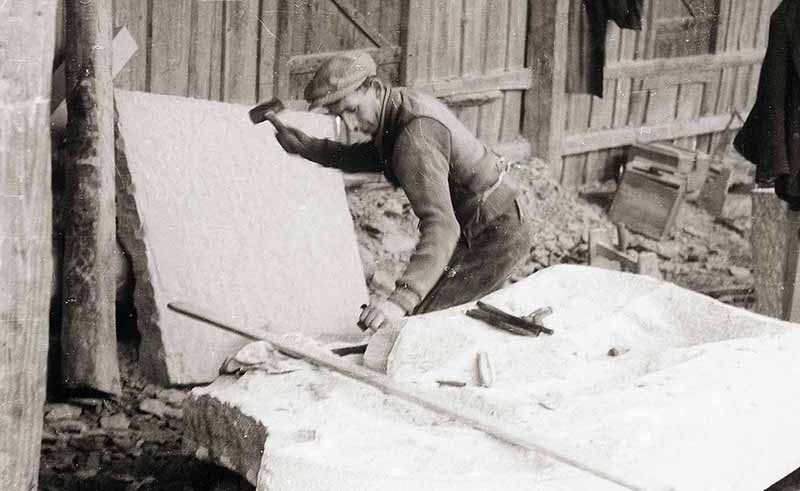In the two open-fronted sheds, the extracted granite blocks were processed further. In the shed facing the rock face, stones were cut to specific dimensions and their surfaces finished. The granite was benched, or supported on stable wooden trestles. The stonemason then gave the workpieces the desired shape and surface. Steps, door and window frames and even tombstones and monuments were produced. The skill of a stonemason was particularly evident in the shaping and carving of profiles.
The shed on the other side was used to make paving stones, a mass-produced item. For most companies, paving stone production was their main business. The “pavers” were semi-skilled pieceworkers. They usually worked in teams: the “scorer” pre-split the blocks that came from the quarry and the “finisher” produced the end product.
Particularly in the profitable production of paving stones, mechanization began early on. So-called “drop hammers” have been used in the Bavarian Forest since the beginning of the 20th century.
We’ve also set up a drop hammer in our show quarry. If you look towards the lake, you’ll see it. However, it doesn’t date back to the time we are showing here. Newer machines like this only came into use after the Second World War.
You’ve now been told the essential facts about our show quarry. If you wish, you can follow me to hear one final chapter. I’d like to show you that granite can float. I’ll meet you at the square in front of the upper entrance. There you’ll also find a wonderful view of the quarry and our granite house. Please walk along the steel fence to return to the building. See you then!
